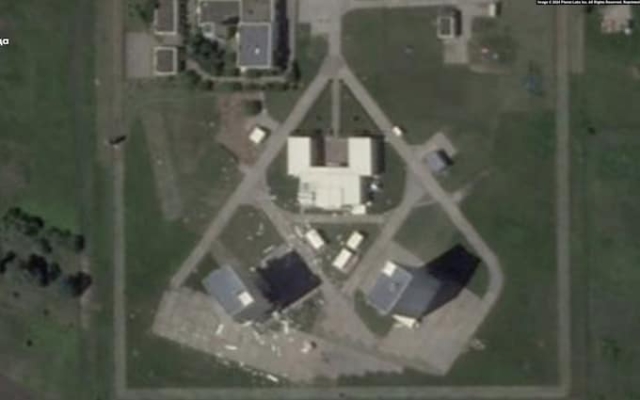 Satellite image taken May 23 showing damage to a radar station. Photo: 2024 Planet Labs Inc.
Satellite image taken May 23 showing damage to a radar station. Photo: 2024 Planet Labs Inc.
A Ukrainian drone attack on a Russian radar station capable of tracking nuclear missiles has caused alarm in the West.
On May 23, Kyiv struck the Armavir radar station in the Krasnodar border region, damaging a modern facility that provides traditional air defense, and is also part of the Moscow nuclear strike warning system.
On Saturday, Ukrainian officials confirmed that their forces carried out the strike, saying the facility controls the airspace over the country and occupied Crimea.
The radar is said to be capable of tracking long-range Atacms missiles delivered by the US to Ukraine in earlier this year.
Mauro Gilli, a senior researcher at the Center for Security Studies at ETH Zurich, said the drone strike was a tactical success as it would force Russia to redeploy air defense systems. and it was also noted that not a single Russian military facility is untouchable.
“We can debate the effectiveness and the merits, but strategically there is a logic to it,” he said.
Other Western analysts, however, were more hesitant and said Ukraine should avoid attacking Russia's nuclear infrastructure.
“Not a wise decision on Ukraine’s part,” said Hans Christensen, a nuclear arsenal expert at the Federation of American Scientists. “Bombers and military installations in general are different in that they are used to attack Ukraine.”
Tord Are Iversen, a Norwegian military analyst, said the attack on part of the Russian nuclear warning system was “not a particularly good idea…especially during times of tension.»
«It is in everyone's best interest that the Russian ballistic missile warning system works well,» he said.
The Kremlin views its nuclear military sites as prestige projects, and strikes against them are considered particularly provocative.
The Kremlin has deployed 10 Voronezh-class installations, one of the most advanced radar systems in Russia, along the Russian border. Each of them has a range of about 4,000 miles and can track 500 objects simultaneously.

Russia has not yet commented on this issue. alleged attack, but it fits the pattern of intense Ukrainian drone strikes this year against targets deep inside Russia, including oil refineries and transport hubs.
The strike came shortly after Moscow began tactical nuclear missile exercises in its Southern Military District.
Olaf Scholz pointedly refused to supply German long-range Taurus missiles to Ukraine, saying that he feared a potential nuclear escalation.
The United States has so far not given in to Ukrainian requests to allow it to use Western weapons in cross-border strikes.
Frustrated Ukrainian military commanders said they have to watch Russia build up forces across the territory. border in a de facto port zone that they were not allowed to cross.
Russian troops have since captured several villages and fired missiles at Kharkov from launch sites and from military aircraft inside Russian territory.
Britain has already given permission for Ukraine to use its missiles to strike Russia, and now the White House is under pressure to follow suit.
Antony Blinken, the US Secretary of State, reportedly supports the changes, and NATO Secretary General Jens Stoltenberg told the Economist this weekend that it is time to “lift some restrictions.”
Ukraine and its NATO allies remain need to be careful, says Fabian Hoffmann, a missile technology researcher at the University of Oslo, because some U.S. officials and some of Ukraine's European allies would view the radar strike as reckless.
“I have some concerns about how This decision was politically wise, since it could have negative consequences for Ukraine in the future in terms of targeted restrictions,” he said.






















































Свежие комментарии